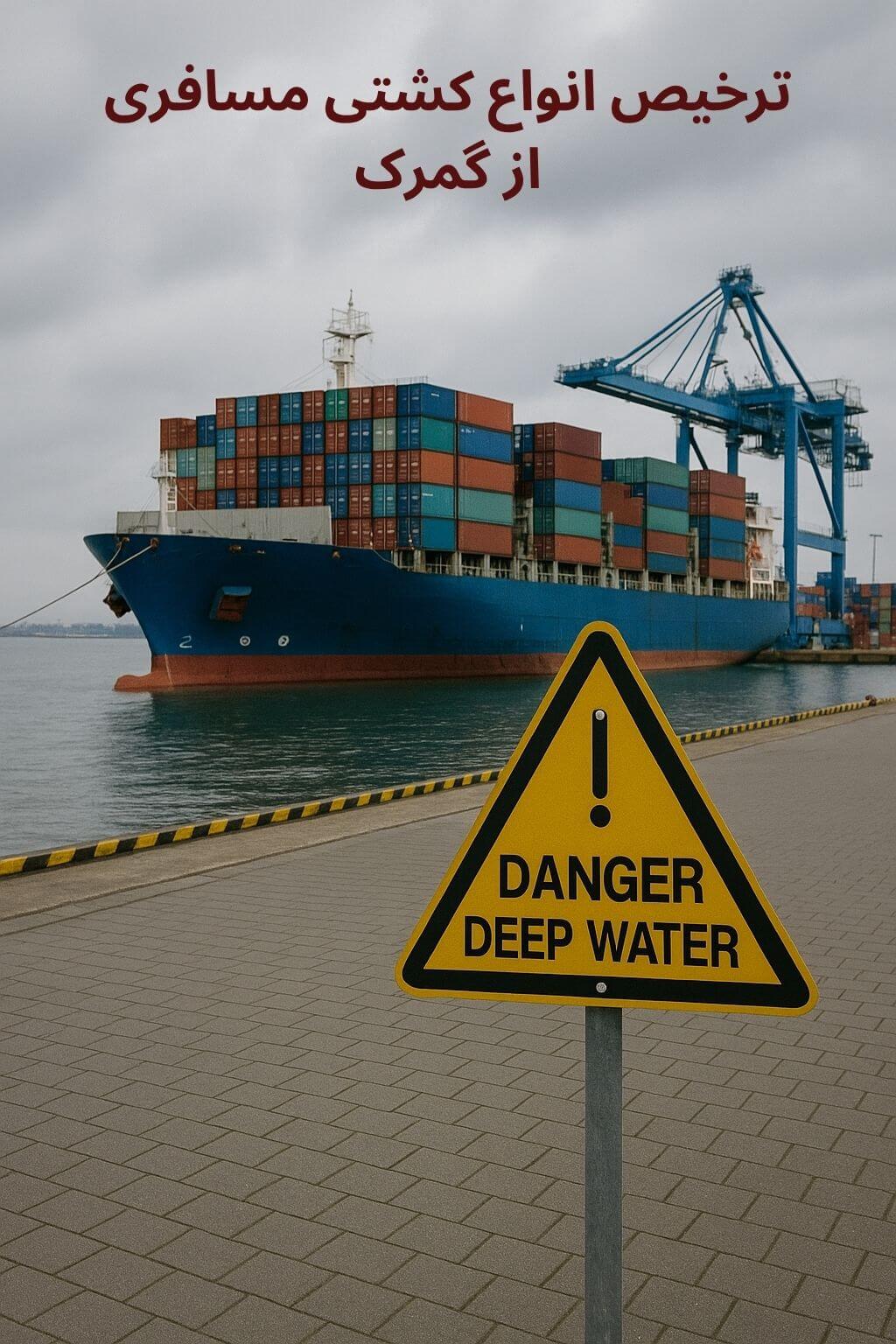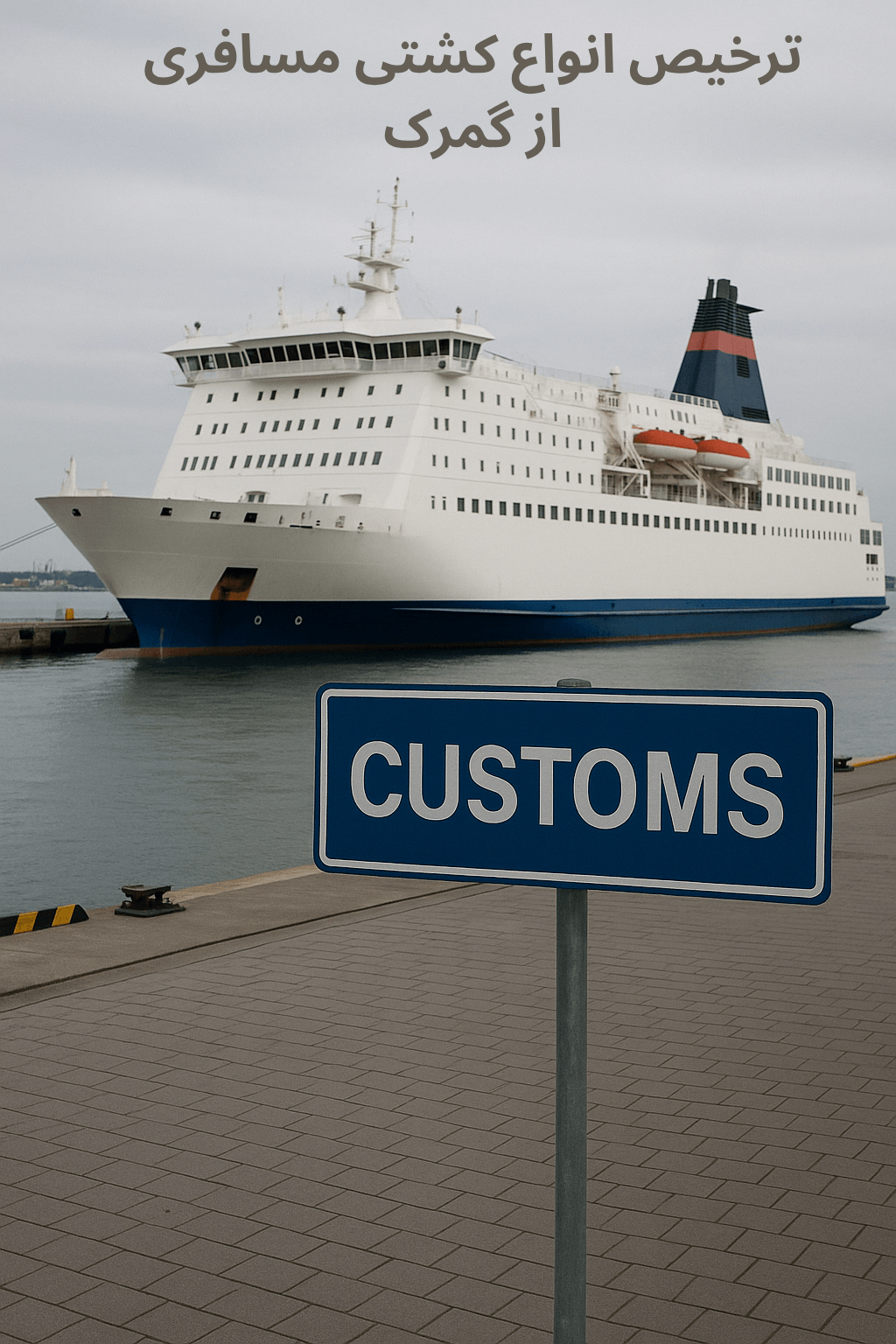Customs Clearance of Passenger Ships (HS Code + Documents & Permits)

To estimate the time and cost for clearing passenger ships (ferry, cruise), reviewing SOLAS/MARPOL standards, and preparing documents, contact Saba Tarkhis.
Instant Free Consultation1) Introduction and Categorization of Types of Balloons and Gliders
1. Small Passenger Ships
- Dimensions and capacity: These ships are usually smaller than cruise ships and have lower passenger capacity. Their smaller size reduces maintenance costs.
- Maneuverability: Designed to move quickly in small ports and shallow waters.
- Design characteristics: Generally simpler than cruise ships with fewer amenities, yet sufficiently comfortable and practical for short trips.
2. Cruise Ships
- Dimensions and capacity: Much larger than small passenger ships and able to carry a large number of passengers. Their design enables simultaneous provision of diverse services.
- Amenities: Equipped with luxurious restaurants, pools, theaters, shopping centers, and sports facilities, delivering a premium experience.
- Design and architecture: Advanced and elegant designs that allow passengers to enjoy unique voyages and a variety of activities.
2) Key Points in Passenger Ship Clearance
1. Essential Documents
- Commercial invoice: Must include precise details such as the ship price, technical specifications, and purchase terms. It is essential for determining customs value and calculating duties.
- Bill of lading: Provides shipment details including route, shipment date, and cargo specifications.
- Certificate of origin: Confirms the country/region where the ship was built; important for duties and trade tariffs.
- List of equipment installed on the ship: An inventory of onboard equipment and amenities that must comply with international standards.
- Technical certificates: Confirm the ship complies with global technical and safety standards.
- Certificates of compliance with safety and environmental standards: Required to ensure adherence to international safety and environmental protection rules.
2. Compliance with International Standards
3. Technical and Safety Inspections
- Safety equipment check: Ensuring proper and reliable operation of lifesaving appliances such as lifeboats and life jackets.
- Navigation systems: Assessing navigation and communication systems for accuracy and effectiveness.
- Overall ship condition: Inspecting structure, hull, engine, and other critical components to ensure soundness and operational readiness.
4. Customs Tariff (HS Code)
| HS Code | Description |
|---|---|
| 8901.10.10 | Passenger ships and related equipment |
Passenger ships are typically classified under HS 8901.10.10. This code is dedicated to passenger ships and related equipment and is used to determine customs duties. Exact duty calculation is based on this code and the ship’s value.
5. Environmental Issues
- Ensuring no pollutant leakage: Ships must be designed to prevent leakage of pollutants into the sea.
- Waste management: Effective systems for collecting and managing waste must be installed on board.
- Use of low-sulfur fuels: To reduce air pollution and protect the environment, ships should use low-sulfur fuels.
3) Major Exporters and Importers of Passenger Ships
Major exporters of passenger ships
South Korea:
Japan:
China:
Major importers of passenger ships
Gulf countries:
Western Europe:
Southeast Asia:
4) Conditions for Import and Export of Passenger Ships
Imports into Iran
Exports from Iran
5) Import and Export Volumes
Imports into Iran
Exports from Iran
Clearance of special goods is possible upon obtaining specific permits.
Need to review HS 8901.10.10, SOLAS/MARPOL standards, and complete documentation? Our team manages your case end-to-end.
Request a Proforma
Frequently Asked Questions
What is the HS Code for passenger ships?
As per the text: 8901.10.10 for passenger ships and related equipment; basis for calculating import duties and charges.
Which documents are required for clearance?
Commercial invoice, bill of lading, certificate of origin, list of onboard equipment, technical certificates, and safety/environmental compliance certificates.
Which international standards must be met?
SOLAS (Safety of Life at Sea) for lifesaving/safety equipment and MARPOL for prevention of marine pollution.
What do technical inspections cover?
Checking lifesaving equipment, evaluating navigation/communication systems, and inspecting the hull/engine and other critical components.
.png)
